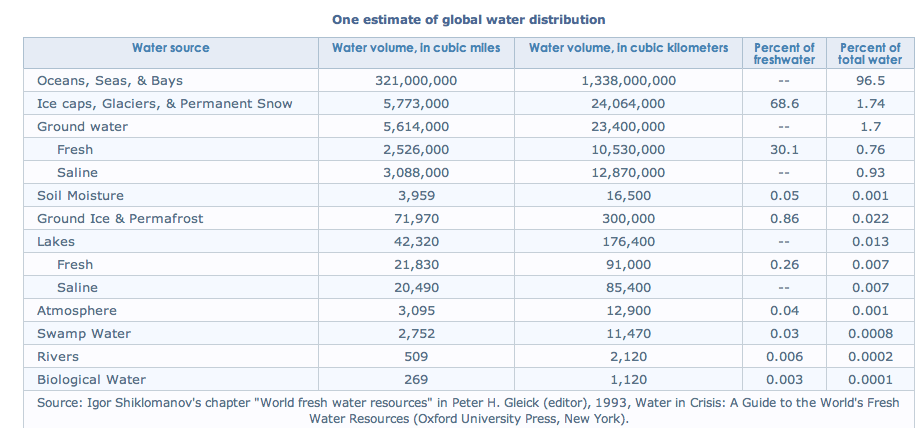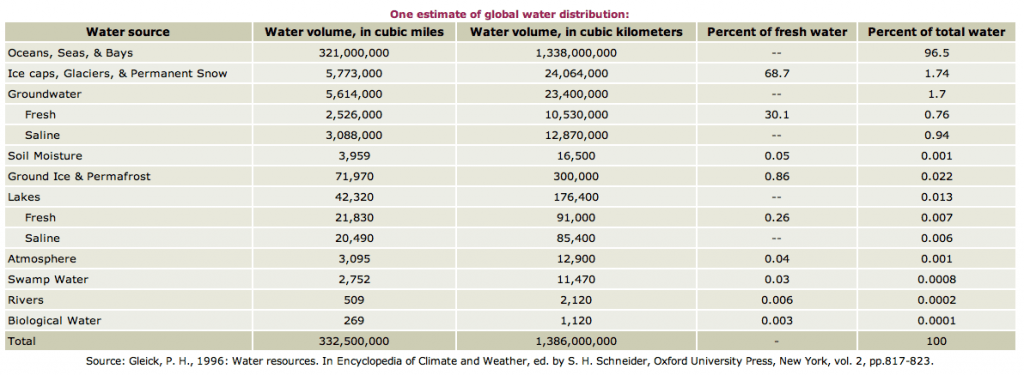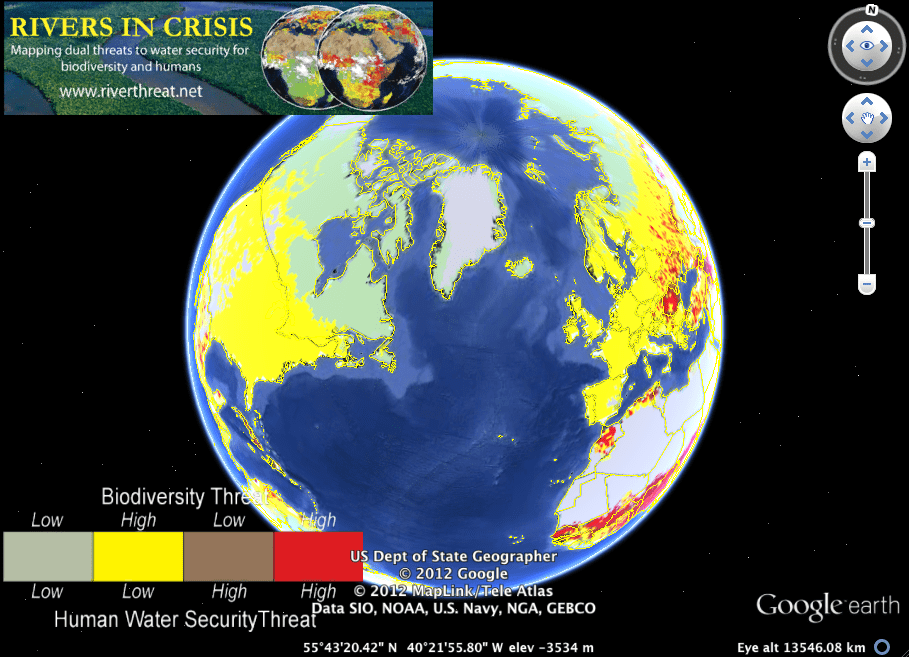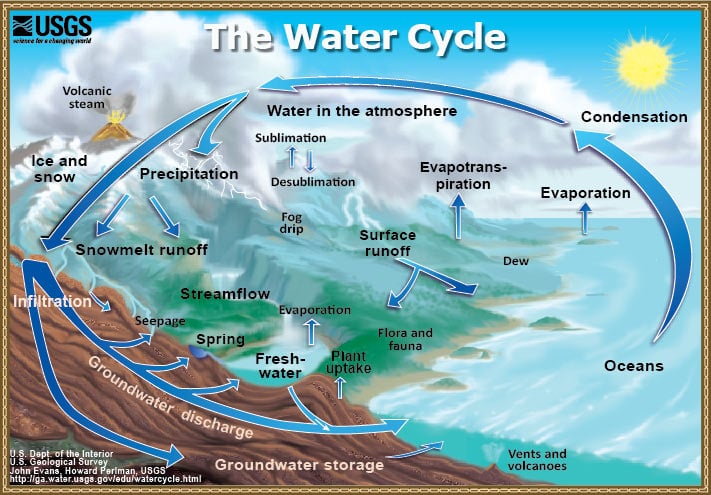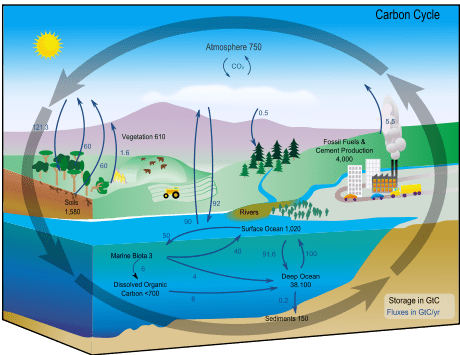Considering any issue in terms of strategic foresight and warning for national security demands, first and foremost, a minimal understanding of the issue itself, which is notably obtained by reaching out to experts in the related fields, as done by the ICA. This is true for water as for any other issue. Without this initial enquiry, it is impossible to even hope delivering proper foresight and warning to policy-makers. It is only after the issue is understood that we may sieve our analysis through the various filters of national security, mission of the institution carrying the analysis and finally complex policy-making system.
Focusing initially on an understanding of water, without any self-imposed restriction, will underline three major points, already sparsely evidenced in the ICA, and upon which we could build more systematically for an even better, and more actionable strategic foresight and warning on water related security issues.
Moving beyond a deceptive anthropocentric water usage

First, and as underlined by all studies on water, including by the ICA, water on Earth is distributed according to various forms and places.
The most widely used estimate of water distribution was established by Igor Shiklomanov (1993) and is similar to a more recent assessment (Gleick, 1996), as the two tables below, extracted from the USGS website, show. It would appear that the ICA uses the same figures, approximations on percentages apart.*
As a result, most studies dealing with water as security issue mainly focus on freshwater, especially freshwater most commonly used by human beings, i.e. rivers and lakes, as well as groundwater. This is how the ICA proceeds, indeed emphasising that “we do not do a comprehensive analysis of the entire global water landscape” (Scope Note). However, one also finds throughout the assessment, evidence that the ICA does not actually limit itself to this approach, as we shall see.
It is indeed necessary to define and most often reduce the scope of any study, as well as to focus on specific objectives, here national interest. Human usage of water is obviously crucial for survival, likely to generate tensions and thus of primary importance to national security. However, because we are here considering potential threats and opportunities to national security, are we sure we can reduce our area of concern to human usage?
Indeed, usage on the one hand and threats or opportunities on the other are not synonymous, notably in the context of climate change and other anthropogenic changes (i.e. changes caused by humans) we must face nowadays.
For example, we now know that a drop in biodiversity may enhance the risks of epidemics (Suzán et al. 2009; Sohn 2009). Hence, if biodiversity is reduced as a result of water-related changes, then we could have increased risks of diseases, which go beyond those already underlined by the ICA p.5.
Instances of such risks to biodiversity have been identified, for example, in “Global Threats to Human Water Security and River Biodiversity” (published in Nature in 2010 and with a dedicated website showing, among other, interactive maps of threats). This study finds notably that “80% of the world’s population is exposed to high levels of threat to water security… while “biodiversity,” is jeopardized, “with habitats associated with 65% of continental discharge classified as moderately to highly threatened.” It shows that technological efforts in richer countries focus on reducing threats to human water security, but do not pay attention to biodiversity.
Thus, most probably, the risks of epidemics are not only higher than emphasised in the ICA, but also present on a much larger territory – including most of the so-called richer world, as shown in yellow on the map – and could involve a wider range of diseases. Such qualifications of threats cannot be neglected in terms of national security.
This example means that our assessments would be enhanced if we were changing the initial focus of investigation. Security issues related to water usage for humans are only one aspect we must address. We need to consider water even when it is not of direct use to humans, i.e. when it affects biodiversity.
Interestingly, the ICA itself underlines this point – and more – when it judges “that, from now through 2040, improved water management will afford the best solutions for water problems” and explains that efficient water management is the “use of an integrated water resource management framework that assesses the whole ecosystem and then uses technology and infrastructure for efficient water use, flood control, redistribution of water, and preservation of water quality” (p.6).
It would be highly beneficial – if difficult – to start working towards a process allowing us to also include systematically such integrated approach for threats (and opportunities) assessment.
Integrating the whole water cycle
Second, as far as water is concerned, the Earth is most often considered as a closed system (USGS), i.e. a system that only exchanges energy with its environment.**
If we are in the case of a closed system, this means that the overall amount of water on earth, whatever its form, does not vary. It can neither augment nor diminish but is transformed and transported through the water cycle, as depicted by the USGS picture below, where humans are represented as part of fauna. Animals will take in water from freshwater storage and plants and then return water through evapotranspiration and waste products.
The water cycle shows, even more than the previous point, the need to stop limiting ourselves to freshwater usable by humans. We must, on the contrary, consider all types of water. Indeed, freshwater is obviously heavily dependent upon other types of water, spheres (as in biosphere or hydrosphere) and processes.
Any change either to one component of the cycle, to the flow, or, worst, to the cycle itself – and this at both global and local (ecosystems) levels – has a potential to produce threats to security – or opportunities – to alter timelines for both threats occurrence and response, and to change likelihood. For example, to completely remove anything related to the oceans from water-related threats assessment may create very unfortunate blind spots indeed. As, in terms of national security, this “cycle approach” is already adopted in the case of snow, glaciers and melt-water, including in the ICA, it only needs to be applied systematically.
Considering interactions between cycles
Finally, the water cycle is also linked to two other major cycles, the carbon and nitrogen cycles.
The water and carbon cycles are linked, notably through the processes of respiration (living beings). Thus, any change in one cycle has the potential to feed back on the other, creating chain reactions with potential threatening impacts, or, on the contrary, opportunities.
Nitrogen is a vital element of life. As explained by John Arthur Harrison, it is “an essential component of DNA, RNA, and proteins, the building blocks of life” (VisionLearning). Without entering into the details of the complex nitrogen cycle (see for example “The Global Water and Nitrogen Cycles” by the University of Michigan), the water and nitrogen cycles can interact in many ways, for example through atmospheric nitrogen and acid rains, changed water pH, freshwater polluted by excess nitrogen, eutrophication, etc. Again, change to one cycle will affect the other with impact on threats and opportunities assessment.
Parts of the feedbacks between cycles are already considered, for example, through the increasingly reduced availability of safe drinking water, and through various water-related impacts on food security. However, it would be necessary to develop a multi-disciplinary effort that would allow us to truly and exhaustively envision potential feedback effects between cycles aiming at improving threats and opportunities identification and evaluation (including impact, timeline and likelihood).
Grounding systematically global water security and related threats and opportunities assessment in an approach moving away from restrictive and deceptive anthropocentric usage, focusing on the whole water cycle at both global and local level and integrating feedbacks with other related cycles would yield crucial further insights in terms of likelihood, timeline, impacts as well as nature of threats.
It would thus enhance the overall product, as well as pertinence for policy-makers and decision-makers. It would also generate vital improvements in terms of indicators and monitoring, which would need to be organised with outreach, considering the scope of the endeavour.
Transition towards such an approach is already underway as many of its elements, besides the more classical national security orientation, are found in the ICA, if we take the “Global Water Security” assessment as representative of anticipatory products for national security. Change needs however to be systematised.
* The source given by the ICA, “World Bank 2010,” is incomplete and insufficient to trace the data used.
** We should however note that the endogenous and the exogenous (for example “having been delivered by comet impacts – e.g. Morbidelli et al 2000”) appearance of water on Earth seem to be still debated (UCLA IGPP) and that the water system can also be considered as open through exchanges at the level of the atomic constituents of water (hydrogen and oxygen).
This article was selected to be re-posted as part of AlertNet’s special multimedia report Reuters Foundation – “The Battle for Water:” The Battle for Water – Global water security: moving towards worldwide assessment
References
Gleick, P. H., 1996: “Water resources.” In Encyclopedia of Climate and Weather, ed. by S. H. Schneider, (Oxford University Press, New York, vol. 2).
Harrison, John Arthur, “The Nitrogen Cycle: Of Microbes and Men.” VisionLearning, Accessed 27 March 2012.
Morbidelli A. Chambers J. Junine J.I. Petit J.M. Robert F. Valsecchi G.B. and Cyr K.E. 2000. “Source regions and timescales for the delivery of water to the Earth.” Meteoritics & Planetary Science 35: 1309-1320.
Shiklomanov, Igor “World fresh water resources” in Peter H. Gleick (editor), 1993, Water in Crisis: A Guide to the World’s Fresh Water Resources (Oxford University Press, New York).
Sohn, Emily, “Animal Biodiversity Keeps People Healthy.” Discovery News, May 19, 2009.
Suzán G, Marcé E, Giermakowski JT, Mills JN, Ceballos G, et al. (2009), “Experimental Evidence for Reduced Rodent Diversity Causing Increased Hantavirus Prevalence.” PLoS ONE 4(5): e5461. doi:10.1371/journal.pone.0005461.
U.S. Intelligence Community Assessment, Global Water Security, 2 February 2012.
UCLA IGPP Center for Astrobiology – NASA Astrobiology Institute; “Cosmochemistry in an astrophysical context – relating the origin of the Solar System to processes of planet building elsewhere (Hansen, Lyons, McKeegan, Morris, Shuping, Wasson, Young); accesed 27 March 2012.
University of Michigan, “The Global Water and Nitrogen Cycles.” Accessed 27 March 2012.
USGS, Water Science fo Schools, last updated 2012. Accessed 27 March 2012.
Vörösmarty, C. J. et al. “Global threats to human water security and river biodiversity.” Nature 467, 555–561 (30 September 2010) doi:10.1038/nature09440.
Wikipedia, various entries.

